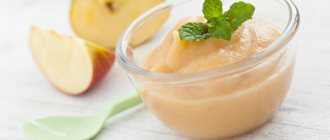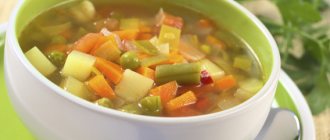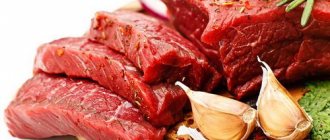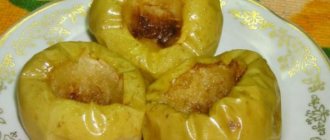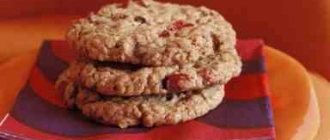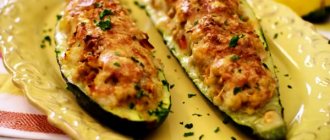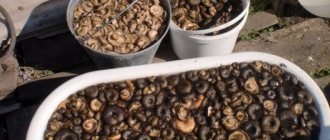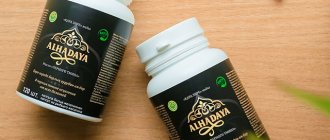Types of pectin and its calorie content
Pectin is considered a low-calorie product because its value is 52 kcal/100 g. It contains virtually no proteins and no fat at all, consisting mainly of carbohydrates. The polysaccharide is not absorbed in the body, but only removes harmful substances.
All types of pectins are divided into three groups:
- HM;
- LM;
- LMA.
HM – highly methoxylated pectins. The most popular and widely used. They account for 70% of the total market volume and are used for the production of various confectionery products (marshmallows, marmalade, jams, etc.)
LM – low methoxylated pectins. Their manufacturing process is more complex, so they are more expensive. Used for products with bio additives.
LMA – amidated pectins. During manufacturing, they undergo additional processing that changes their functional properties. More often, such substances are present in the compositions of low-calorie jams and in fillers for yogurt or preserves.
In industry and at home, this substance is used in two forms: powder and liquid extract. They are not interchangeable and each of them is used differently. The powder is dissolved in juice or mixed with fruit, and the liquid extract is added only to hot foods. In stores, pectin can often be bought in powdered bags.
Which pectin is stronger - apple or citrus?
Apple (subject to equal degree of esterification).
Gels made from apple pectin have higher strength compared to citrus pectin, i.e. obtaining a product with the same fracture strength requires less consumption of apple pectin.
Look, in the picture on the left there is a gel based on apple pectin, on the right – on citrus.
The benefits and harms of pectin
Like any product, pectin can bring both benefits and harm. From a medical point of view, the following advantages of using this substance can be noted:
- improving the metabolic rate in the body;
- lowering blood cholesterol levels;
- improvement in the functioning of the circulatory system;
- normalization of the gastrointestinal tract (anti-inflammatory and analgesic effect);
- removal of heavy metals, toxins and other harmful substances from the body;
- reducing the risk of heart disease and cancer;
- normalization of intestinal microflora;
- participates in the process of accelerating the breakdown of fats, which leads to weight loss.
Taking pectins in quantities exceeding the norm is also harmful. This may lead to the following consequences:
- increased fermentation process and excessive flatulence in the intestines;
- impaired absorption of substances such as zinc, magnesium, iron and calcium;
- the appearance of constipation;
- pain in the intestinal area;
- impaired absorption of proteins and fats.
An overdose of pectin can only occur with additional intake of dietary supplements. In its natural form, as part of fresh fruits and vegetables, this polysaccharide will not cause harm. People who regularly consume pectin have healthy, elastic, clean skin.
How to cook aromatic roast with meat, potatoes and mushrooms in pots according to a homemade recipe.
If you don’t have enough time to cook, cook soup with sausage for the first course - it’s tasty, satisfying and simple.
Take note of the recipe for incredibly delicious muffins that cook in the microwave in just 5 minutes.
What is the difference between all types of pectin?
The fundamental difference between pectins is as follows:
Highly esterified pectins require sugar and acid to work (this is apple, citrus, sometimes yellow). And various additives allow pectin to be thermoreversible (NH).
Low-esterified pectins must see calcium in the mixture in order to start working (this is pectin FX 58 and other types for working with dairy and other calcium-containing products). These are good for any composition with a low sugar content.
Read more about types of pectin
Products high in pectin
The recommended intake of pectin is 25 g per day. It is better to consume it in its natural form. Then it will be better absorbed by the body and bring only benefits. Record holders for the content of this useful polysaccharide: apples and oranges. In their fiber the content of this substance reaches almost 2%.
There are other, no less healthy fruits that must be included in the diet of a person who cares about their health, these are:
- lemon, grapefruit, lime;
- banana;
- pear;
- melon;
- quince;
- carrot;
- persimmon, mango;
- blueberries, strawberries and cherries;
- apricots;
- fresh pineapples;
- plum berries;
- dates and figs.
It is difficult to consume the daily norm in its natural form; to do this you need to eat almost a kilogram of fresh fruits or berries. But even with regular intake of at least 15 grams, a person will feel a significant improvement in his condition. It is very useful to drink fresh juices, and it is recommended to consume them together with pulp. In order not to lose healthy pectins.
How to replace one type of pectin with another?
Since different types of pectin are each intended for their own specific task, replacing them with another type is undesirable .
But if suddenly the situation is hopeless, first determine the purpose of pectin in your recipe - to hold together calcium-containing products or to obtain a dense marmalade texture, a liquid sauce (coulis) or a denser confiture.
The tasks may be the following:
- density of the product at the outlet (liquid, dense, creamy)
- temperature conditions for further use (whether the finished product will be frozen or reheated. For example, filling for tarts and pies, which will be baked with dough - and therefore reheated)
In addition, the source fruit or berry you work with is of great importance. After all, we remember that the gelation of pectin is influenced by the acidity of the product, the amount of dry substances in the mixture, as well as the natural content of pectin in the product.
In principle, you can use any pectin for marmalade, but be prepared for the fact that the textures will be different. Classically, marmalade is prepared with pure apple pectin.
Areas of application of pectin, and how to make it yourself at home
Pectin is obtained from fruit and berry squeezes. In the food industry it is used to prepare: jam, preserves, jelly, marmalade, mayonnaise and ketchup. This polysaccharide is also a good preservative. In pharmacology, jelly-like capsules for powder are made from it. This substance is also included in many face masks and creams. And in the tobacco industry it is used as glue to join damaged tobacco sheets.
You can buy it at the store, but making it at home has many benefits. Firstly, you can be completely confident in its environmental friendliness and quality. Secondly, it will be a 100% natural product, without chemical impurities. The preparation itself is simple and does not take much time.
Apple pectin
To prepare it, it is better to take apples from your own garden or buy fruits from your region.
Ingredients:
- water – 120 ml;
- fresh apples – 1 kg.
Cooking sequence:
- Washed and dry apples should be cut into 8 slices. There is no need to clean them;
- Place the chopped apples in a thick-bottomed pan and add water;
- Cook over low heat, without bringing to a boil, for 30 minutes, stirring constantly;
- We take another container, cover it with a nylon sieve, and transfer the boiled apples into it;
- The juice that drains into the container contains pectin. It can be preserved in jars or frozen in ice cube trays.
Why do we need citric acid? Is it necessary? When and how to add it?
Citric acid plays the role of a gelling catalyst and also a pH regulator. Therefore, it must be added to mixtures with low pH levels. These are, for example, lemon, cherries, oranges, blueberries, cranberries.
Citric acid is also needed to shorten the reaction time of pectin setting.
Without adding citric acid, pectin will also work, but it will take a little longer to harden.
Citric acid is usually introduced at the very end of cooking the mixture. More often, it is pre-diluted in water (take an equal amount of citric acid and water and let it dissolve) and pour it into the boiling mixture.
Lemon juice is also possible, but due to the lower acid concentration, you will need to take more of it than the citric acid indicated in the recipe. In addition, along with the lemon juice, additional water will be added to the mixture. For example, 100 g of lime contains 7 g of citric acid; lemon - 5.6 g; raspberries - 2.5 g; black currant - 1.2 g; tomato - 1.0 g; pineapple and strawberries - 0.6 g; cranberries - 0.2 g; apple - 14 mg.
How to take powdered pectin correctly
There is now a selection of powdered pectin on sale. It can be made only from apples or with the addition of citrus fruits. For allergy sufferers, it is better to focus on substances obtained only from green varieties. Like any other adsorbent, pectin should be taken between meals. To achieve a positive effect, you must adhere to the following rules:
- Before you start taking it, you need to read the instructions;
- ½ tsp. Completely dissolve spoons of pectin in 500 ml of boiling water;
- The cooled solution should be drunk in a glass, twice a day;
- It is important to drink more fluids during the day to avoid pain in the intestinal area.
The positive effects of the supplement can already be seen and felt after one week of regular use.
Basic rules for preparing dishes with pectin and popular recipes
Using pectin as an ingredient in a dish is beneficial. But there are rules and culinary tricks that you need to know before you start cooking:
- It is necessary to strictly follow the instructions indicated on the industrial packaging of the polysaccharide;
- Do not use a supplement that has expired;
- Prepare dishes with this substance over high heat, stirring constantly; it is not recommended to leave them on the stove unattended;
- To reduce the amount of foam during cooking, you can add half a spoon of butter;
- To store jams and preserves with pectin, you need to choose small jars. And the place should be cool and dry. This will extend the shelf life.
Tangerine jam recipe
| Ingredients | Quantity |
| sugar - | 500 g |
| pectin - | 20 g |
| water - | 100 g |
| tangerines - | 20 pcs |
| Cooking time: 60 minutes | Calorie content per 100 grams: 94 Kcal |
Tangerines always remind me of the New Year holiday. Therefore, when you open a jar of this jam, you plunge into the magic of winter.
Preparation:
- We clean the tangerines and squeeze the juice out of them (preferably with a juicer);
- Pour juice and water into a saucepan in a ratio of 1:3. After boiling, reduce the heat and evaporate the moisture for another 10 minutes;
- Mix pectin with sugar and add to the boiled juice;
- Cook the jam for another 14 minutes. It should become darker and more viscous, but fluid;
- Transfer the jam into small sterilized jars and seal.
What can be replaced
The right ingredient is not always at hand! That’s why it’s worth figuring out what you can replace pectin with in a recipe – there are several options:
- Corn starch. Please note that it must be stirred constantly to avoid the formation of lumps. It will not be possible to achieve a transparent color;
- Flavored gelatin – adds color and fruity aroma;
- Agar-agar is an excellent alternative to gelatin;
- Orange and lemon peel and zest;
- Apples, cranberries, grapes or currants are fruits rich in naturally occurring elements.
We told you how you can replace pectin in jam or preserves - if you don’t have any of the ingredients described above in your kitchen, you can use a little trick.
Just increase the cooking time - fruits that are cooked for a long time release more natural thickeners. However, in this case, the taste of the finished product will deteriorate slightly.
We invite you to familiarize yourself with Thermal Underwear. Choice. Classification, types, types. Application, wearing, washing, care. Feedback, experience, advice, recommendations
